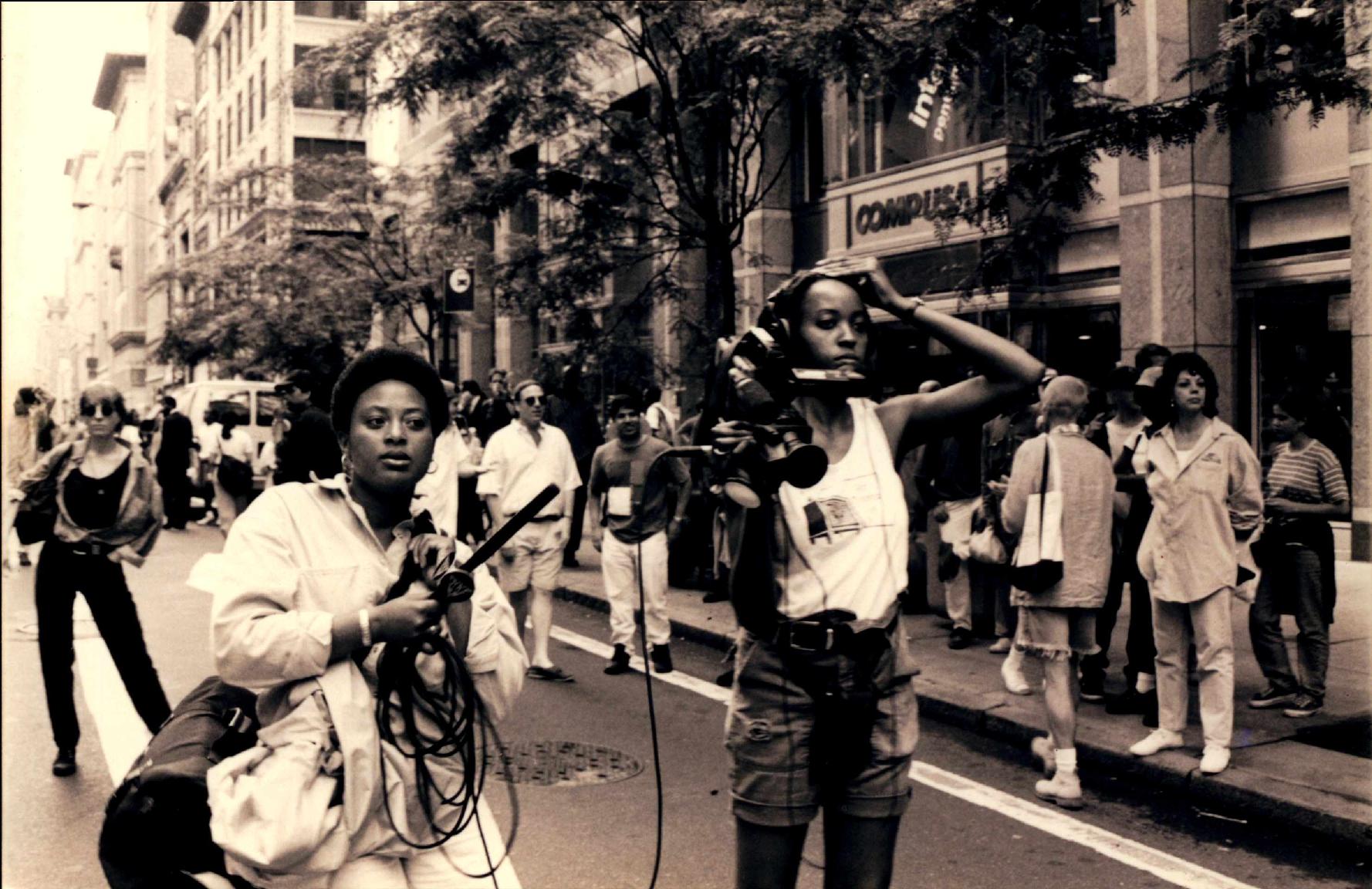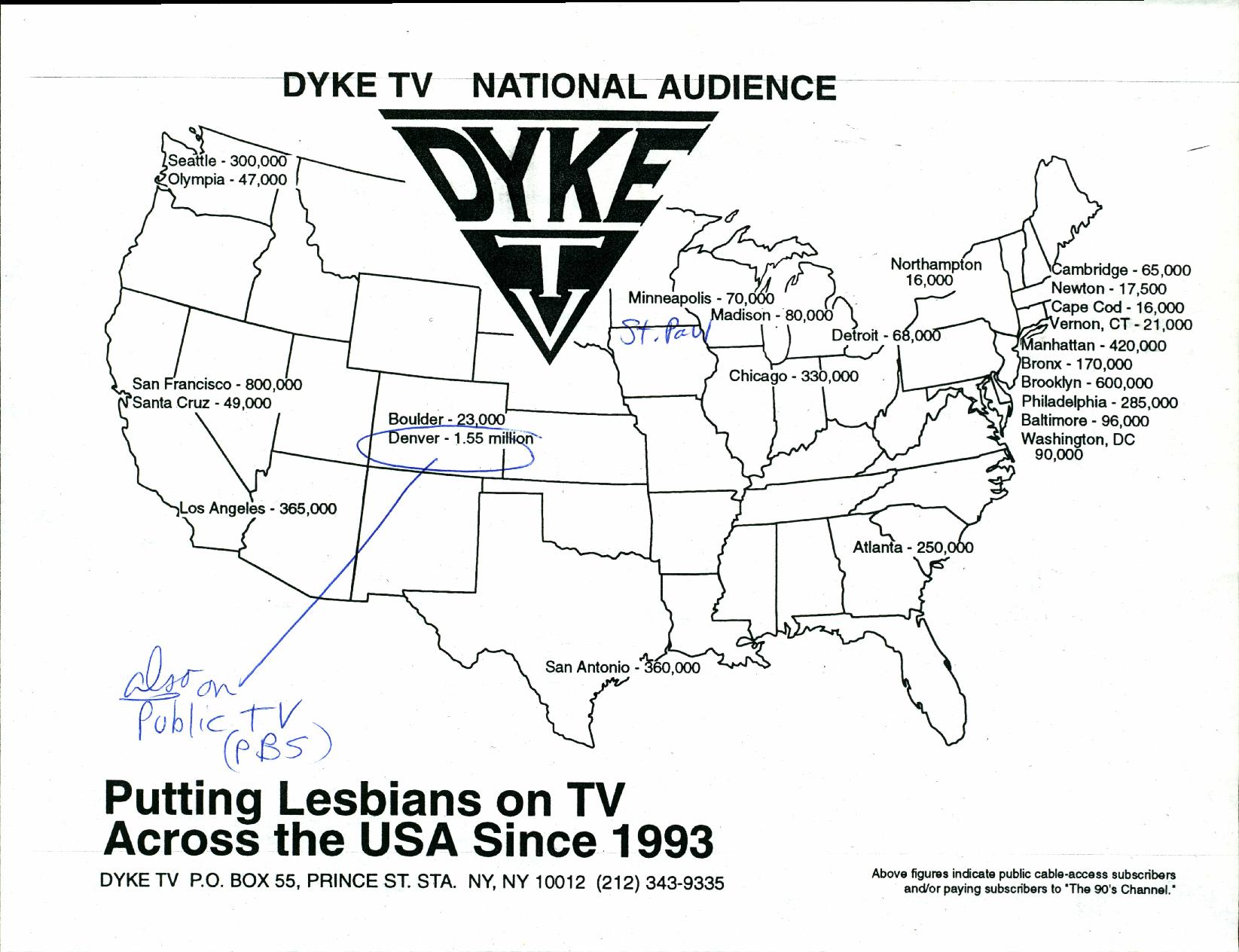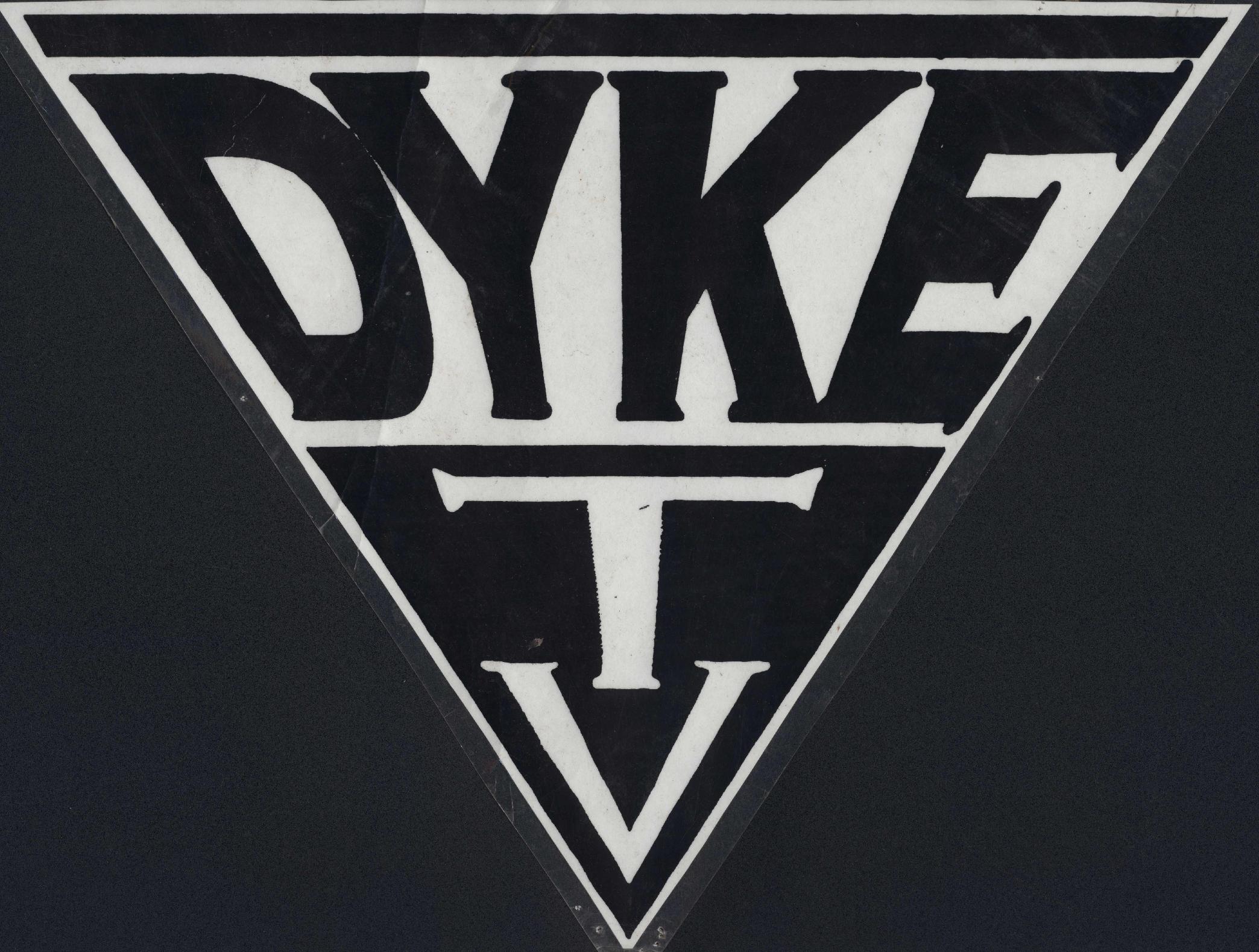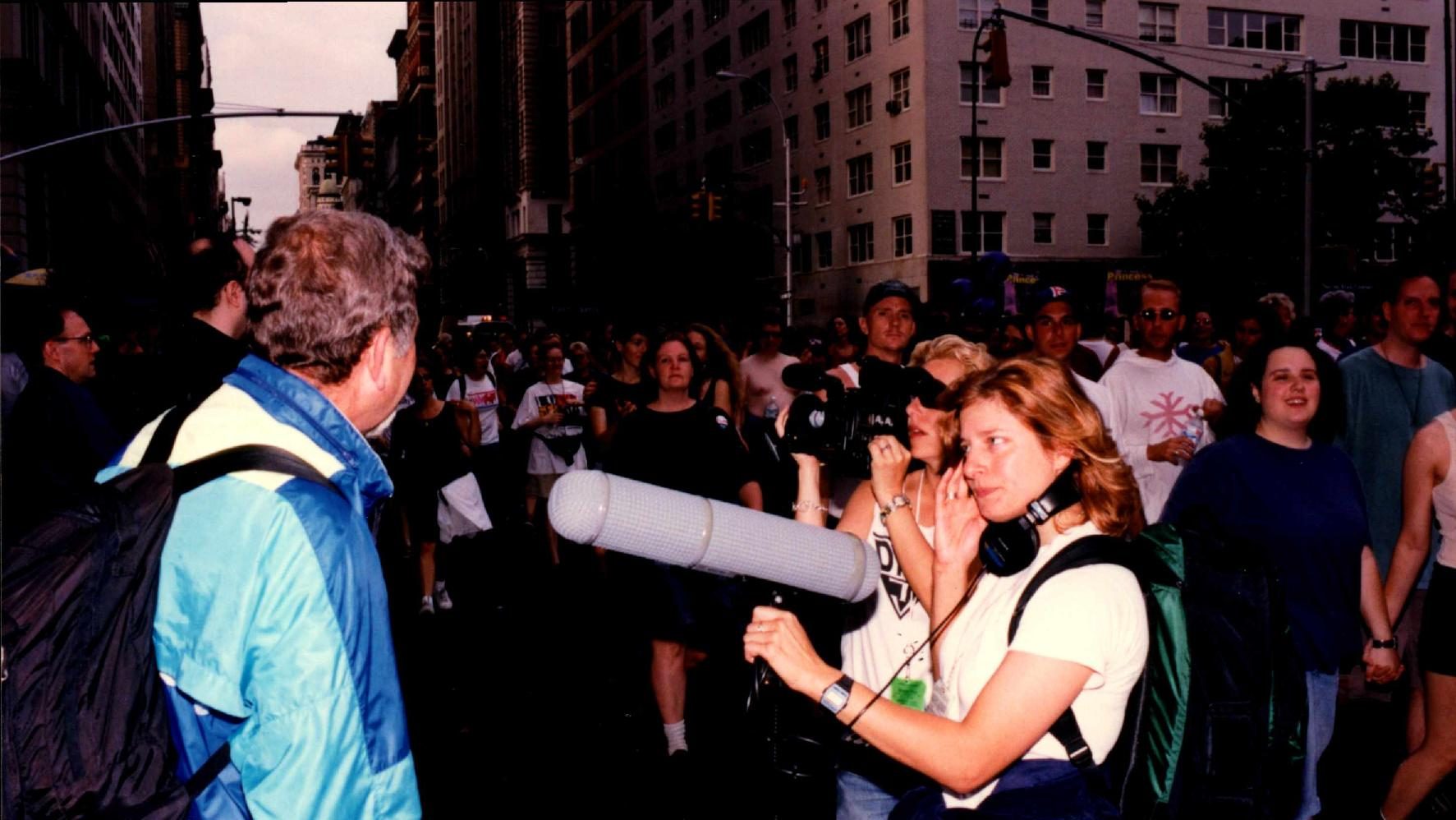
“Before Ellen…there was Dyke TV!”
The medium? A weekly broadcast news program, made by and for lesbians. The message? TV to incite, provoke, subvert, and organize. Dyke TV was the TV you couldn’t find anywhere else.
In 1992, New York City-based activist Ana Mario Simo approached filmmaker Mary Patierno and theater director Linda Chapman about creating a video wing of the Lesbian Avengers.1 Modeled after DIVA (Damned Interfering Video Activists) TV, the video wing of ACT UP (AIDS Coalition to Unleash Power), Dyke TV would cover the political and cultural issues that mattered most to the lesbian community. And it would give power to lesbians while doing so, by teaching any interested dyke who walked into DTV’s small Manhattan studio how to use a camera, pitch a news segment, and edit television that made a difference.
Dyke TV episodes were structured in a “magazine format,”2 with short 3 – 5 minute segments, save for the occasional feature. Regular segments included The Arts, News, Eyewitness (features of particular political issues or protest events), and, importantly for this project, Lesbian Health. Other segments included I Was a Lesbian Child (coming out stories told through home photos and movies), On The Road (a project that took Dyke TV crew members around the United States to explore lesbian life across the country), and Ann Northrop Mouths Off (in which producer Ann Northrop, well, mouths off about current issues affecting lesbians).
When Dyke TV initially hit the airwaves in 1993, the program was only broadcast in New York via the Manhattan Neighborhood Network‘s Channel 34 (MNN).3 But as the popularity of the program took off among lesbians, demand for Dyke TV spread around the country. As the 1996 distribution map below demonstrates, Dyke TV later reached far beyond New York City, at one point broadcasting in over 61 cities across the United States and Canada.

As Dyke TV’s audience broadened, so did the scope of its coverage. Later episodes would cover the religious right in the deep South, the murder of transgender Nebraska man Brandon Teena, and lesbian life in Yugoslavia. The politics and activism of Dyke TV grew largely out of the AIDS activism of ACT UP and the Lesbian Avengers, and their work continued the traditions of community care and direct action that characterized the gay and lesbian communities in the AIDS era. The program raised awareness of oft-overlooked lesbian health issues, such as AIDS in women, higher rates of certain cancers, and substance abuse. The increased reach of Dyke TV heightened expectations for its coverage, but it also increased the scope of what the program was able to achieve in fostering a nationwide lesbian community united in solidarity, struggle, and pride.

Dyke TV ran until 2005, a span of roughly 12 years. To watch Dyke TV today is to see a veritable “Who’s Who?” of famous lesbian activists and artists, from Barbara Smith to Joan Biren, Urvashi Vaid to Cheryl Dunye, Barbara Gittings to Carmelita Tropicana. But more than that, to watch Dyke TV is to be overwhelmed by snapshot after snapshot of lesbian life and resilience in the years coming out of the height of the AIDS crisis.
More than simply providing news, Dyke TV sought to provide viewers with material resources, the empowerment to seek change, and a sense of community care in a callous time. Today, as we face yet another life-changing pandemic in the form of COVID-19, we can look back to the model of DIY dyke media embodied in Dyke TV and consider what aspects of queer community care we may choose to carry with us moving forward.
Footnotes:
- “Mary Patierno, Mary Patierno Interview Transcript,” Nov. 26, 2016, Lesbian Herstory Archives AudioVisual Collection, Dyke TV, Lesbian Herstory Archives, New York, New York, http://herstories.prattinfoschool.nyc/omeka/exhibits/show/dyke-tv/item/843. ↩
- Ibid. ↩
- “Dyke TV Facts Sheet,” n.d., Box 73, Dyke TV Records, Sophia Smith Collection, Northampton, Massachusetts. ↩
